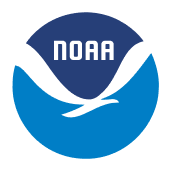GSL experimental models tested in the 2024 NOAA Hazardous Weather Testbed

GSL participated in the 2024 NOAA Hazardous Weather Testbed Spring Forecast Experiment during May with several experimental models under the microscope. The primary goals of the NOAA HWT are to accelerate the transfer of promising new tools from research to operations, inspire new initiatives for operationally relevant research, and identify and document sensitivities in the performance of state-of-the art experimental high-resolution modeling systems.
Participants will evaluate several different experimental models and their performance in predicting severe weather. The experimental Rapid Refresh Forecast System (RRFS) version 1 and the Rapid Ensemble Forecast System (REFS) will be evaluated against the operational High- Resolution Rapid Refresh (HRRR) and High-Resolution Ensemble Forecast (HREF) systems for severe weather forecasting applications. Comparisons will be made for Day 1 & 2 lead times. Additional comparisons will be made during the first 12 h of the forecasts to evaluate the effectiveness of the data assimilation systems in each system.
In the last two years, fully Artificial Intelligence (AI)-based models, known as AI Numerical Weather Prediction (NWP) emulators have been developed by the private sector for global weather prediction. This area of research has the potential to rapidly advance weather prediction. Skill measures of the NWP emulators commonly exceed those of the European Center for Medium Range Weather Forecasts Integrated Forecast System, the world’s most skillful global NWP system.
For the first time, NWP emulators are being tested for real-time operational forecasting applications. NWP emulators can produce forecasts in seconds, 12 orders of magnitude faster and with fewer computational resources than traditional NWP systems. The algorithms are trained using large, global, multi-year reanalysis datasets.
The HWT is evaluating several of the publicly available algorithms being run experimentally at the Cooperative Institute for Research in the Atmosphere (CIRA). The AI models being tested include FourCastNet from NVIDIA, Pangu-Weather from Huawei Cloud (China), and GraphCast from Google.
Rapid science and technology infusion to advance operational forecasting requires direct, focused interactions between research scientists, numerical model developers, information technology and communication specialists, and operational forecasters. The HWT provides a unique setting to facilitate these interactions and allows participants to better understand the scientific, technical, and operational challenges associated with the prediction and detection of hazardous weather events.
Our Mission
Lead research and directed development through the transition of environmental data, models, products, tools, and services to support commerce, protect life and property, and promote a scientifically literate public.
Research Areas
Organizational Excellence, Earth System Prediction, Advanced Technologies, and Decision Support are the foundation to achieving the GSL Grand Challenge: Deliver actionable global storm-scale prediction and environmental information through advanced technologies to serve society.
Global Systems Laboratory

